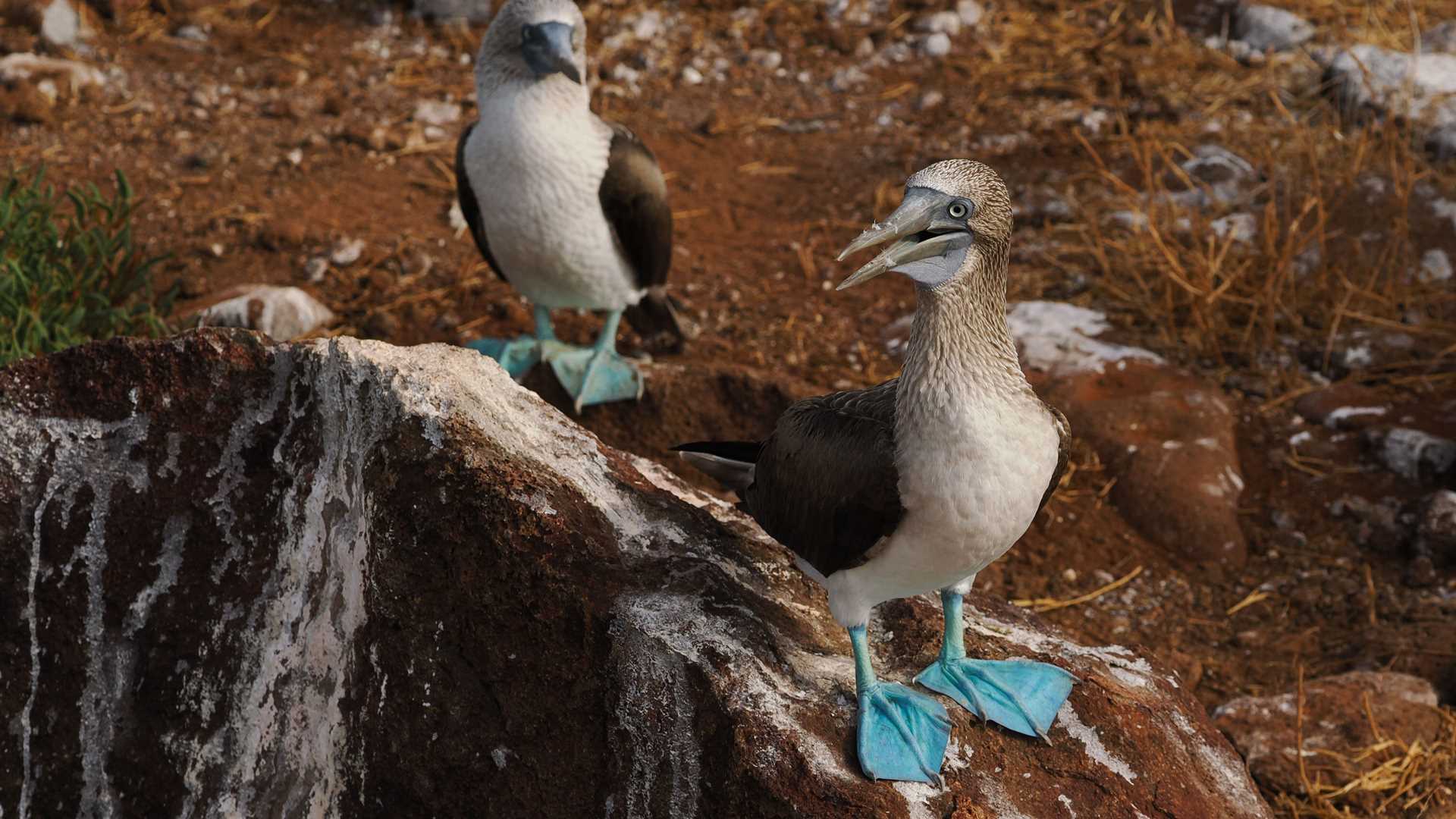The first full day of our expedition took place in the central part of the archipelago; on the northern side of Santa Cruz Island, we visited North Seymour. This island is small but full of life. Its wind-privileged position and flat grounds have made this place the perfect spot for bird nesting. Our hike looped around the island, showing us the inside of the incense tree forest and then the sandy shoreline. This walk offered everyone the opportunity to see the famous blue-footed boobies in all different stages: from adults that were performing their courtship ritual, to juveniles ready to depart for their life journey. We also witnessed the nest building and displaying of frigatebirds. The male frigatebird’s large red pouches fully inflate to attract females, giving a show of color and contrast. Our groups also met the land iguanas, snakes, and playful sea lions by the shore of this beautiful island.
In the afternoon, we visited Rabida Island where we snorkeled from a red sand beach and explored the reef by the rocky shore.







